



If you think coal is going away anytime soon—think again.
No other natural resource has enabled our survival and prosperity quite like coal. Yet, there’s a narrative being pushed today that our world would be a better place without it. To this, we say, ‘not so fast.’
Coal continues to be one of the most abundant, affordable, and dispatchable forms of energy in the world. It remains a vital component in the making of steel, cement, fertilizers, and thousands of other products essential to our quality of life.
This website lays out the coal hard truth with primary sources, data and powerful evidence about coal’s immense contributions to society. Your thoughtful consideration of coal and other carbon-based natural resources is certainly welcome here. Thank you for joining this important conversation.

Feature Story
caught
in the
headlines








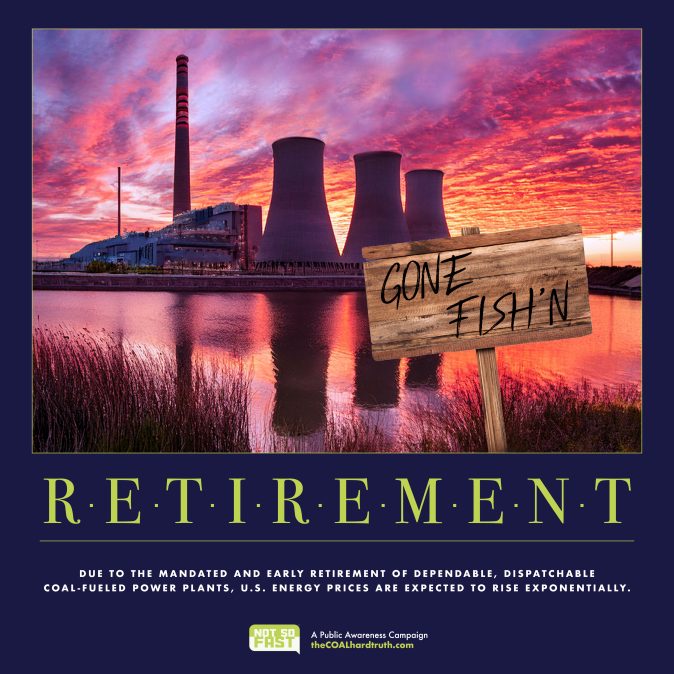
In July 2024, PJM, the largest U.S. Regional Transmission Organization, saw power capacity prices soar 830% from the previous year. This sharp rise provides evidence that moving away from fossil fuels—and rushing too quickly to renewables—will drive significant energy inflation and threaten the U.S. economy.
Source: America’s Power: Higher Electricity Costs and Coal Retirements

To reach net-zero emissions by 2050, annual clean energy investments would need to triple to $4 trillion by 2030. With current investments falling short, this goal remains aspirational—if not impossible.

From the sidewalks we walk on to the skyscrapers that define our skylines, coal plays a critical role in building our world. With 90% of cement plants globally powered by coal, it’s a foundation we can’t afford to overlook.
Source: Schumacher, G. and L. Juniper: “Coal Utilization in the Cement and Concrete Industries,” The Coal Handbook, Second Edition, Volume 2 (2023). Pages 627-663.
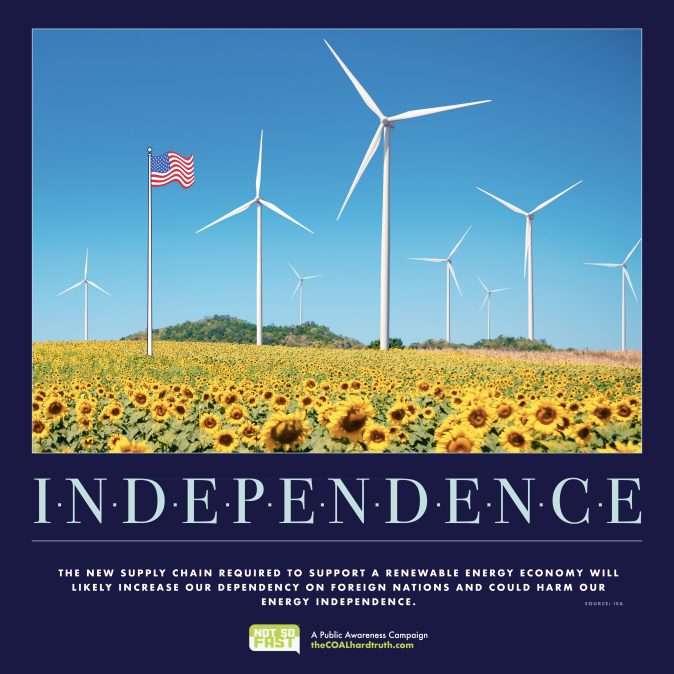
As renewables require vast amounts of critical minerals, 80% of rare earth processing currently happens in China, raising concerns about U.S. energy independence. A diversified energy mix, including domestic coal, can help safeguard supply chains.
Source: U.S. Department of Energy: Critical Minerals and Materials
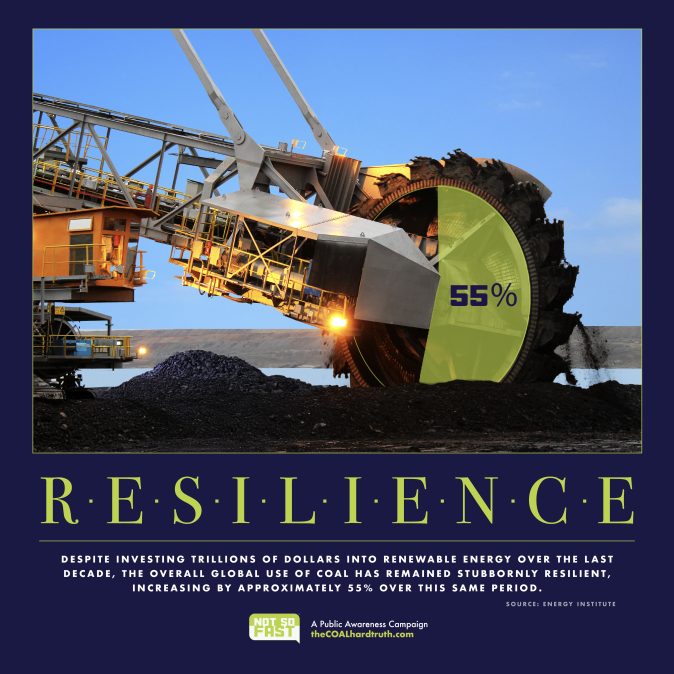
Despite large investments in renewables, coal use continues to grow, demonstrating its unyielding resilience. Transitioning away from coal is more challenging than many realize. True energy solutions require acknowledging all sources.
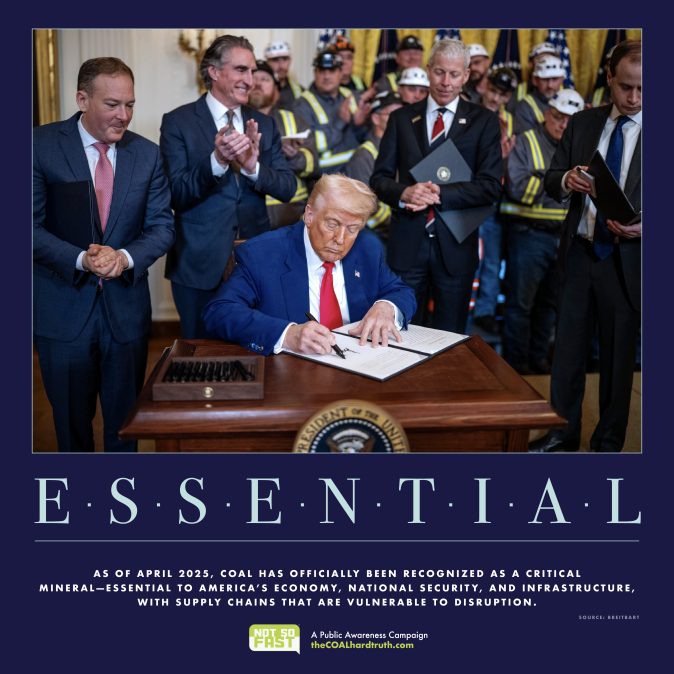
An Executive Order signed by President Trump officially recognizes coal as a critical mineral—a vital step to safeguard America's energy security, economy, and future.
Source: Breitbart: Trump Signs Four Actions to Protect, Bolster America’s Coal Industry
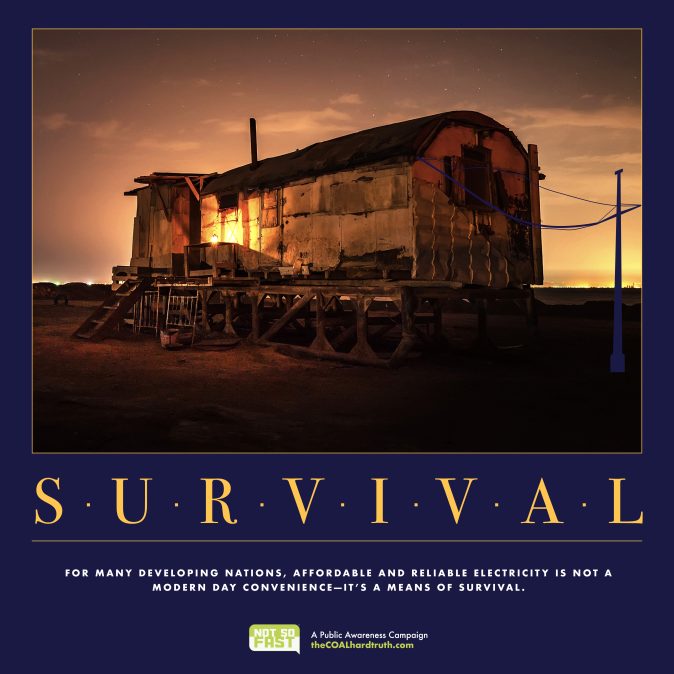
Coal is one of the most abundant sources of electricity worldwide. Developing countries, deprived of coal as a source of affordable electricity, will struggle to rise out of poverty.
Source: Energy Institute: Statistical Review of World Energy 2023
World Coal Association: Coal–Energy for Sustainable Development
United Nations: Human Development Reports: Global Multidimensional Poverty Index 2022

Bridges, skyscrapers, and essential infrastructure all have one thing in common—steel. And 75% of global steel production depends on coal. Without it, the framework of modern society wouldn’t exist.
Source: IEA: Steel Industry Overview (July 11, 2023).
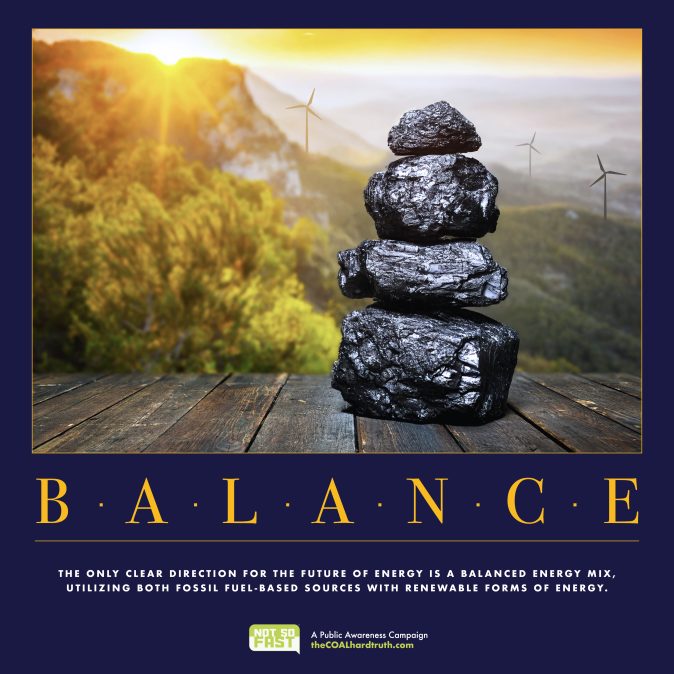
A truly sustainable energy future isn’t about extremes—it’s about balance. Fossil fuels and renewables must work together to ensure reliable, affordable power. Because when the sun doesn't shine and the wind doesn't blow, coal keeps the lights on.

Coal has powered progress for centuries—and it's not slowing down. With global production projection hitting a record 9 billion tons in 2024, this enduring resource continues to drive economies, build infrastructure, and fuel the future.
Source: IEA: Coal 2024

While estimates vary, research indicates that hundreds of thousands of birds are killed every year when they collide with the fast-spinning blades of a wind turbine.
Source: Michael Hutchins, American Bird Conservatory: Top 10 Myths About Wind Energy and Birds

Coal is arguably the single most important natural resource responsible for the creation of our modern civilization. Even today, coal continues to be a vital necessity for the production of electricity in developing countries around the world.
Sources: Center for Robust Decision-making on Climate and Energy Policy: Energy Transitions in U.S. History
PBS Learning Media: Coal, Steam, and the Industrial Revolution

Despite trillions invested in renewables over the past 20 years, fossil fuel use has only dropped from 86% to 84% of global energy produced, a mere 2% shift. At this rate, an effective transition to renewables will take longer than building the Pyramids. Not so fast.
Source: Mark P. Mills Senior Fellow, Manhattan Institute: The “Energy Transition” Delusion A Reality Reset

To achieve a scenario where solar and wind supply most of U.S. electricity by 2035, transmission capacity may need to triple—requiring up to 10,100 miles of new lines built every year, assuming construction starts in 2026.
Sources: National Renewable Energy Laboratory: 100% Clean Electricity by 2035 Study
U.S. Federal Energy Regulatory Commission: Office of Energy Projects Energy Infrastructure Update
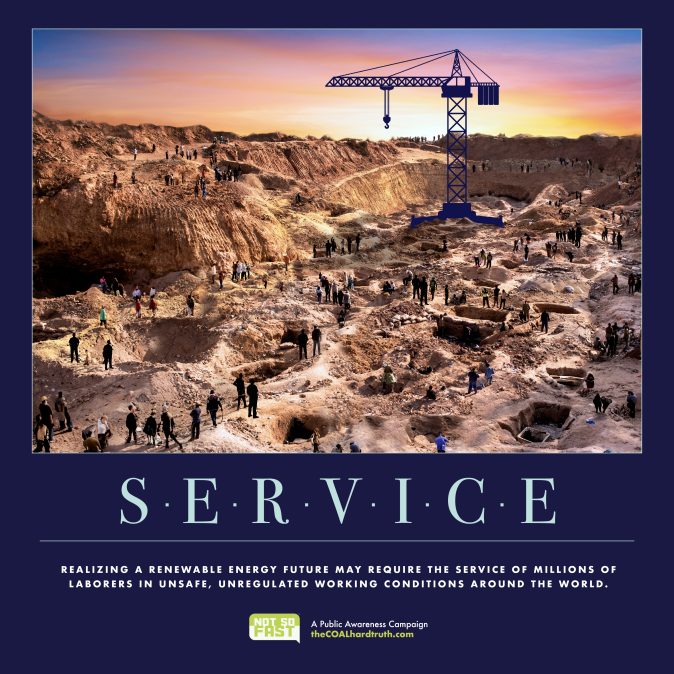
Renewable energy will significantly increase our dependence on rare minerals needed for batteries, EVs and new transmission lines. These materials will be mined in foreign nations throughout the world. Many of these countries have lower workplace safety and environmental standards than those in the U.S.
Policymaker’s Issue Kit
Facts and Responses for a More Measured, Analytical, and Moral Approach to Our Nation’s Energy Policies

Power Struggle
Join one of the most impassioned debates in the country.